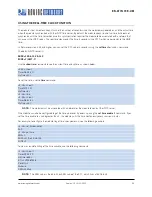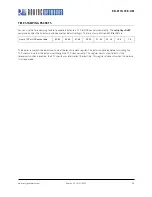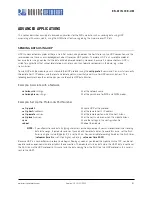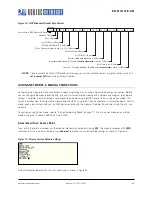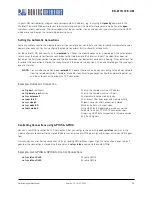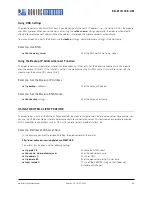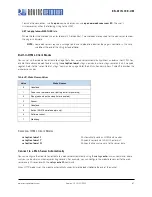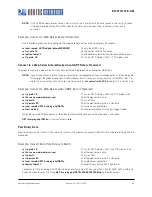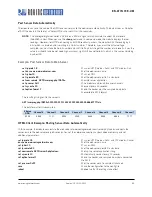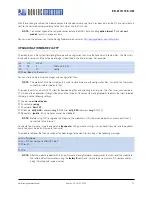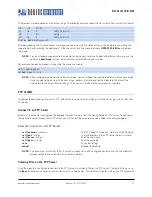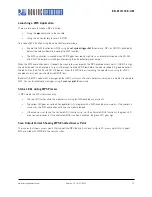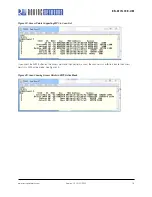
www.rovingnetworks.com
Version 1.0r 9/21/2012
66
RN -W IFLYCR -U M
Using DNS Settings
The module contains a built-in DNS client. If you do not specify the host’s IP address, (i.e., it is set to 0.0.0.0), the module
uses DNS protocol. When you set the host name using the
set dns name
<
string
> command, the module automatically
attempts to resolve the host address. When the address is resolved, the module connects automatically.
To manually look up a host’s IP address, use the
lookup
<
string
> command, where <
string
> is the hostname.
Example: Use DNS
set dns name my_server
// Set the DNS host name to my_server
Using the Backup IP Address/Connect Function
The module contains a feature for auto-retry and redundancy. If the host’s first IP address connection fails, the module
uses the backup IP (if set). If this fails (or is not set), the module uses the first DNS name. If this fails (or is not set), the
module uses the backup DNS name (if set).
Example: Set the Backup IP Address
set ip backup
<
address
>
// Set the backup IP address
Example: Set the Backup DNS Name
set dns backup
<
string
>
// Set the backup host name
USING THE HTML CLIENT FEATURE
The module has a built-in HTML client. When enabled, the module can get or post data to a web server. For example, you
can use the HTML client to post serial and/or sensor data to the host web server. This feature makes possible to provide
Wi-Fi capabilities to applications such as GPS units, remote sensors, weather stations, etc.
Example: Retrieve Web Server Data
In this example, you want to retrieve data from the web server with the format:
http://www.webserver.com/ob.php?obvar=WEATHER
To perform this function, use the following settings:
set ip proto 18
// Enable the HTML client
set dns name www.webserver.com
// Set the web server name
set ip address 0
// Turn on DNS
set ip remote 80
// Set the web server port, 80 is standard
set com remote 0
// Turn off the REMOTE string so that it does not
// interfere with the post








